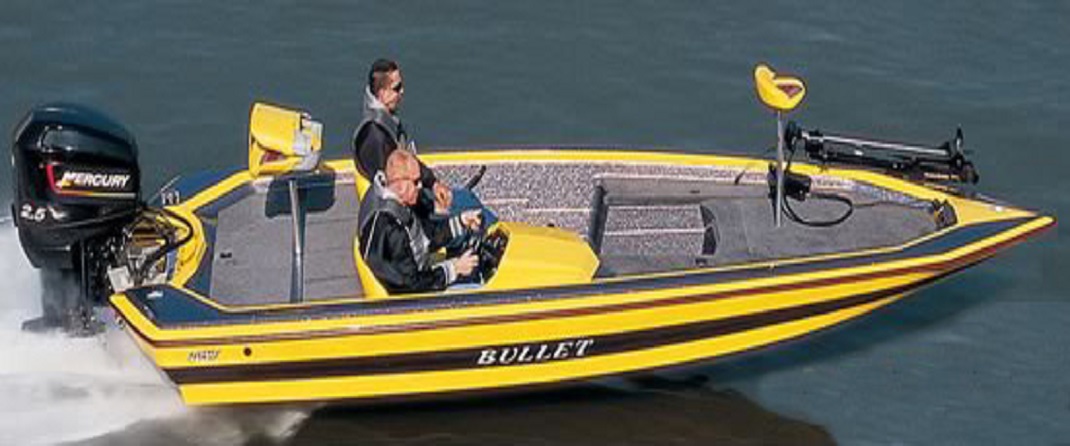
Breaking In The Driver
Breaking In The Driver By John Tiger Jr
New high-performance engines need plenty of break-in hours, so use that time to really get to know your boat
I SPENT A LITTLE MORE THAN 13 hours last summer breaking in a new Mercury 2.5 EFIout board on a busy lake with hundreds of other pleasure boats, sailboats and personal watercraft buzzing around me. At least a dozen times, I was taunted by other hotrod boaters daring me to race, but since I was in break-in mode, there was nothing I could do! How frustrating is that? Here I was, at the wheel of a 100 mph rig, and all it could do was hit a 6000 rpm wall thanks to Mercury Racing's computer-controlled break-in cycle, which is designed into all Mercury Racing EFI consumer outboards.
According to the 2.5's service manual, the break-in period is programmed to last just two hours, during which time you're supposed to be loading the engine heavily.This can be done by bringing it up to about a 3500 to 4500 rpm cruise, with the trim and jack tucked all the way in so the boat's wetted surface is maximized. This provides resistance to the straining and growling Merc as it tries to push its way through the water. This really looks silly to onlookers in the know, and they shake their heads in disbelief as the boat passes by with the hull glued to the water. What a sight! I've been involved in a few of these break-in sessions, and I've yet to see one take the specified two hours. More often, it's on the high side of six hours; one 2.5 EFI we broke in last spring took almost 19 hours to break through the rev limiter.
Paul Nichols claims of Nichols Outboard Engineering in Soddy Daisy,TN claims to know the secret to a quick break-in with these engines,but so far he hasn't told me. The real secret, I'm sure, is a constant load. My Mercury Digital Diagnostic Terminal (DDT), hooked to the 2.5's ECU box, told me that time spent under 2500 rpm wasn't being counted, nor was time spent with the trim and jack raised up, with little load on the engine due to the reduced wetted surface of the hull. As I cruised my native Lake George hoping that the rev limiter would release my mighty Mercury soon, I decided that as I broke the engine in, l would break myself in, too. I wanted to get to know my new hull a bit better.
After the engine had about two hours on the clock, though I knew it wasn't going to reduce my wait time, I began running the rig at 4500 to 5500 rpm with the trimin various positions. In rougher chop, this allowed me to become more familiar with my new ride's handling characteristics in rough water, running at speeds from 55 to just under 80 mph. As A Running with the trim in and the hull glued is the only way to load a new Mercury for break-in. It's also a good way for the driver to get a feel for the boat. time flew by (all right, sometimes it dragged) , I became better acquainted with my new boat. So much so, that by the time the 12th hour of limited rpm time had passed, I had enough seat time in this rig to be very comfortable driving it in almost any water condition my lake could offer up. When the engine finally let loose and turned up to its maximum 7700 rpm, it was a genuine surprise. However, I'd had so much time in the saddle that handling the I04 mph top end was not tough to get used to. For a while, it was annoying to have to spend so much time with only three-fourths of the engine's total performance potential.
After some careful reflection, however, I decided that perhaps Mercury was onto something here. From its standpoint, I'm sure, it's a bottom-line dollar decision; running the engine that long at less than full bore gives it plenty of time to get the rotating and reciprocating parts to seat together, so that warranty claims are greatly reduced. But from a liability and customer safety standpoint, it makes a ton of sense, as well. Most, if not all, Mercury Racing outboards get bolted to a high-performance hull capable of very high speeds; my new ride was no exception. Many of these boats are purchased by people who have no idea what can happen at high speeds. They may have no clue how to handle the boat in conditions other than the ideal setting or calm, uncrowded waters with low winds. Holding the engine back for a while is not a bad thing; it provides plenty of time to get to know the rig and the engine; to listen to its quirks and eccentricities, and to become familiar with the boat's handling before pushing the throttle to the wall. Maybe I'm getting old, but I was able to appreciate Mercury's "waiting game" after thinking it through. It's not a bad idea for all high performance outboards, and for all high-performance drivers.
John Tiger Jr. is Bass Boat Exchnage technical editor, and his commentmy is based upon more than 20years of high-performance outboard experience.


Leave a comment